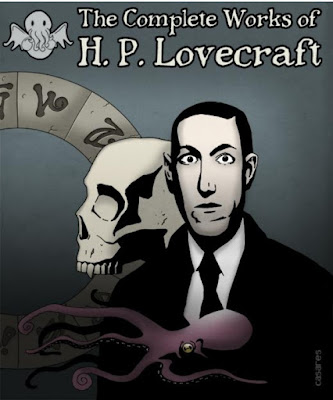The Complete Weird Fiction of H. P. Lovecraft (PDF)
Table of Contents
The PDF might take a minute to load. Or, click to download PDF.
If your Web browser is not configured to display PDF files. No worries, just click here to download the PDF file.
About the Author
H. P. Lovecraft was born in 1890 in Providence, Rhode Island, where he lived most of his life. He wrote many essays and poems early in his career, but gradually focused on the writing of horror stories, after the advent in 1923 of the pulp magazine Weird Tales, to which he contributed most of his fiction. His relatively small corpus of fiction--three short novels and about sixty short stories--has nevertheless exercised a wide influence on subsequent work in the field, and he is regarded as the leading twentieth-century American author of supernatural fiction. H. P. Lovecraft died in Providence in 1937.



.jpg)
No comments:
Post a Comment